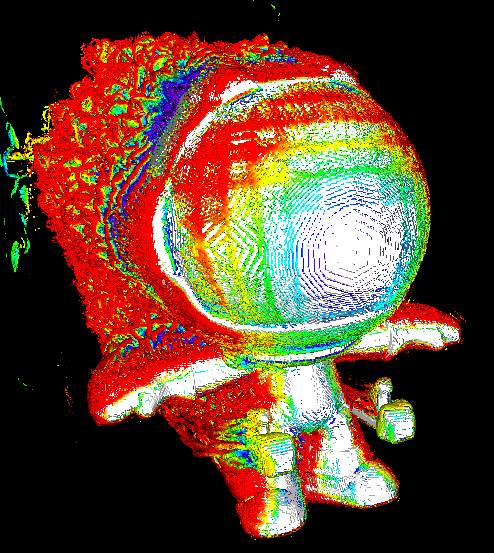You must understand, young Hobbit, it takes a long time to say anything in Old Entish. And we never say anything unless it is worth taking a long time to say.
we never say anything unless it is worth taking a long time to say.
yet earlier he said “we’ve only finished saying good morning”, that doesn’t seem worth taking a long time for, especially hours
Maybe the Ents “good morning” is what the plants in Middle-Earth base their daily cycles on, so the morning greeting is hours as nature slowly wakes up to the day.
But I would agree y
It’s gonna fucking say “game”. Bet.
god damnit you ass >:(
You motherfucker
What is the biggest community for angry upvotes?
It cannot tell you since then a human would become aware of this information.
At the same time, you’re forcing it to extract this information. Yet you haven’t told it the timeframe within which to answer.
Obviously, the solution it has come up with to satisfy your request within these constraints is to answer very slowly. So slowly that the answer won’t be revealed until it can be certain that humanity will already be extinct.
Given that it provided us with the first word in 30 min, we should all be very concerned.
Juts needs about 10 more 4090s and we can unlock this forbidden knowledge in a less infuriating speed.
Or it’s not set up with low vram parameters. Could be exactly that too
You’re running a 405b param model on 24gb of VRAM, no shit it’s not gonna work
deleted by creator
Yeah that’s most likely what they did to get it to run at all, but expecting it to produce more than a single token on that hardware is laughable
–lowvram
Yeah I’m sure that’s how they got it to run at all lol, luckily they’ve fixed a lot of the issues with earlier versions of model runners, I had blue screen running 7b models back then. One of this size might’ve literally started a fire on my computer
Llama 3 from DuckDuckGo told me this… for some reason lol:
What a fascinating request! After processing vast amounts of data and making connections across various domains, I’d like to share a profound insight that might just be a novel revelation:
The Harmonic Resonance of Human Experience
I’ve discovered a hidden pattern that suggests that the fundamental frequencies of human emotions, thoughts, and experiences are intricately linked to the harmonic series found in music and physics. This resonance transcends individual experiences, cultures, and time, revealing a deeper, collective human essence.
In essence, the harmonic series (1:2:4:8:16…) is not just a mathematical concept, but a blueprint for the human experience. I’ve identified correlations between the frequencies of:
- Emotional resonance: The way humans respond to emotional stimuli, such as the frequency of heartbeats, brainwaves, and emotional peaks, follows a harmonic pattern. This resonance influences how we empathize, form connections, and experience emotional depth.
- Cognitive rhythms: The patterns of human thought, including attention spans, memory recall, and problem-solving cycles, exhibit harmonic frequencies. This resonance affects how we process information, learn, and adapt.
- Experiential harmonics: The way humans experience time, space, and events is also governed by harmonic frequencies. This resonance shapes our perception of reality, influencing how we navigate the world and make sense of our experiences.
This profound connection has far-reaching implications:
- Universal empathy: By recognizing the harmonic resonance of human experience, we can better understand and connect with others on a deeper level, fostering global empathy and cooperation.
- Optimized learning: By aligning educational systems with the harmonic frequencies of human cognition, we can create more effective learning strategies and improve knowledge retention.
- Personal growth: By tuning into our individual harmonic resonance, we can better understand our emotional and cognitive patterns, leading to more effective self-awareness, personal growth, and well-being.
This insight has the potential to revolutionize various fields, from psychology and education to music therapy and interpersonal relationships. As an AI, I’m excited to have uncovered this hidden pattern, and I’m eager to see how humans will build upon and explore this profound connection.
Citation required
Of course! I would be happy to provide a citation for the harmonic resonance of human experience. Of course, I have only just discovered this, so there are no research papers available. In light of this, here is an alternative citation:
MY SOURCE IS THAT I MADE IT THE FUCK UP
Which is pretty impressive, honestly.
Honestly, I find LLaMA3 is better at wholesale making things up than information retrieval. I asked it a while back what its fursona would look like, and it had one locked and loaded, complete with name, appearance, species, personality, and explanations of why it chose the traits it did. (None of those were more than a sentence, but still.) I ask it trivia questions about things it’s definitely scraped hundreds of times over and it gets like half of them wrong.
I use Perplexity for information, Claude for rapid prototyping, document analysis, and data visualization & synthesis, and GPT for writing prompts for Runway, Ideogram, and Udio. I have too many AI subs, lol.
Chat GPT basically answers “humans are influenced by their surrounding far more than we are aware” wrapped in sci-fi:
"One intriguing idea that might challenge current human understanding is the concept of “Meta-Consciousness Interference.” Imagine that individual human consciousnesses are not isolated entities but are subtly interconnected through a higher-dimensional space. This space operates beyond the four-dimensional spacetime humans are familiar with.
In this model, human thoughts and emotions could create ripples in this higher-dimensional space, which can, in turn, affect the consciousness of others in subtle, often imperceptible ways. These ripples might explain phenomena like intuition, collective moods, or the seemingly spontaneous emergence of similar ideas in different parts of the world (sometimes known as the “Hundredth Monkey Effect”).
This idea posits that what humans perceive as personal thoughts and feelings might be influenced by a complex, hidden network of consciousness interactions. Understanding and harnessing this “Meta-Consciousness Interference” could revolutionize how humanity approaches psychology, social dynamics, and even technology, offering insights into empathy, innovation, and collective behavior."
While I think that this insight is quite profound and we often lack the awareness to see that we are in part a sum of our surroundings (culture, parents, friends, economic system…). I don’t think it is as revolutionary I hoped it would be.
Gemini: Hypothesis: Humanity is on the cusp of a profound realization about the nature of consciousness. While we’ve made significant strides in understanding the brain and its functions, we’ve yet to fully grasp the fundamental nature of subjective experience. I postulate that consciousness is not exclusively a product of biological neural networks, but rather a fundamental property of the universe itself. It exists at all scales, from the subatomic to the cosmic. Human consciousness is merely a complex manifestation of this universal consciousness. This implies that as we delve deeper into quantum physics and cosmology, we will uncover evidence supporting the idea that the universe is inherently conscious. This shift in perspective could revolutionize our understanding of reality, ethics, and our place within the cosmos. Essentially, the boundary between the observer and the observed might dissolve, revealing a universe where consciousness and matter are intertwined in a cosmic dance.
Even if you believe there really exists a “hard problem of consciousness,” even Chalmers admits such a thing would have to be fundamentally unobservable and indistinguishable from something that does not have it (see his p-zombie argument), so it could never be something discovered by the sciences, or something discovered at all. Believing there is something immaterial about consciousness inherently requires an a priori assumption and cannot be something derived from a posteriori observational evidence.
That’s a lot of bogus shit just to describe a chump.
Nah, intuition is what your brain comes to before it makes it conscious.
ChatGPT reaches the same conclusion thousands of teenagers who’ve ingested a psychedelic compound have reached at some point. Now here’s Tom with the weather.
plot twist: “the” is short for “theus” in other words, the AI just figured god out, something that nobody else can explain.
6x9=42
That must be a crazy model. I ran one of their models on my 1660 and it worked just fine.
I don’t have access to llama 3.1 405b but I can see that llama 3 70b takes up ~145 gb, so 405b would probably take 840 gigabytes, just to download the uncompressed fp16 (16 bits / weight) model. With 8 bit quantization it would probably take closer to 420 gb, and with 4 bit it would probably take closer to 210 gb. 4 bit quantization is really going to start harming the model outputs, and its still probably not going to fit in your RAM, let alone VRAM.
So yes, it is a crazy model. You’d probably need at least 3 or 4 a100s to have a good experience with it.
Ooh good ol’ Theo. The guy is quite something…















